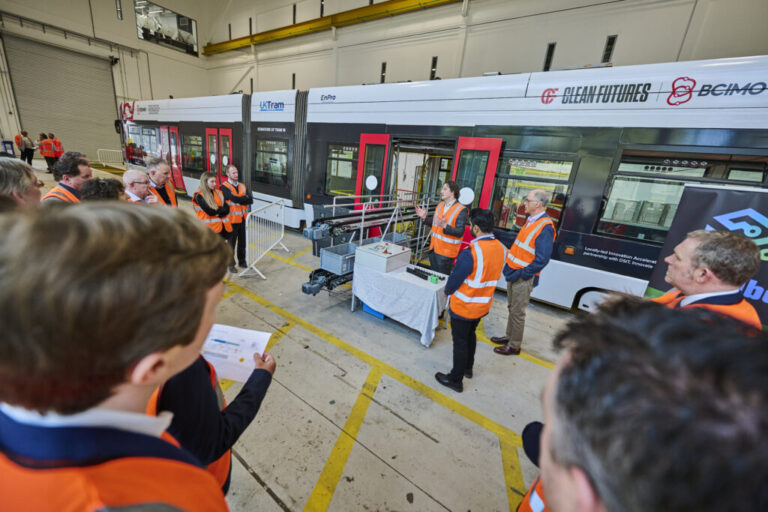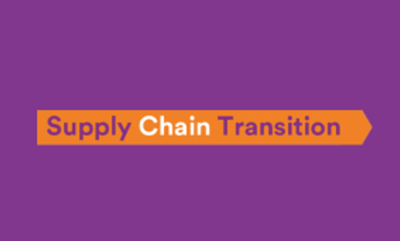(This article can also be found on my personal blog, theurbantechnologist.com, where I explore themes of emerging technology and Smarter Cities)

(Photo of Chicago by Trey Ratcliff)
Many cities I work with are encouraging clusters of innovative, high-value, technology-based businesses to grow at the heart of their economies. They are looking to their Universities and technology partners to assist those clusters in identifying the emerging sciences and technologies that will disrupt existing industries and provide opportunities to break into new markets.
In advising customers and partners on this subject, I’ve found myself drawn to four themes. Each has the potential to cause significant disruptions, and to create opportunities that innovative businesses can exploit. Each one will also cause enormouse changes in our lives, and in the cities where most of us live and work.
The intelligent web

(Diagram of internet tags associated with “Trafalgar” and their connections relevant to the perception of London by visitors to the city by unclesond)
My colleague and friend Dr Phil Tetlow characterises the world wide web as the biggest socio-technical information-computing space that has ever been created; and he is not alone (I’ve paraphrased his words slightly, but I hope he’ll agree I’ve kept the spirit of them intact).
The sheer size and interconnected complexity of the web is remarkable. At the peak of “web 2.0” in 2007 more new information was created in one year than in the preceding 5000 years. More important, though, are the number and speed of transactions that are processed through the web as people and automated systems use it to exchange information, and to buy and sell products and services.
Larger-scale emergent phenomena are already resulting from this mass of interactions. They include universal patterns in the networks of links that form between webpages; and the fact that the informal collective activity of “tagging” links on social bookmarking sites tends to result in relatively stable vocabularies that describe the content of the pages that are linked to.
New such phenomena of increasing complexity and significance will emerge as the ability of computers to understand and process information in the forms in which it is used by humans grows; and as that ability is integrated into real-world systems. For example, the IBM “Watson” computer that competed successfully against the human champions of the television quiz show “Jeopardy” is now being used to help healthcare professionals identify candidate diagnoses based on massive volumes of research literature that they don’t have the time to read. Some investment funds now use automated engines to make investment decisions by analysing sentiments expressed on Twitter; and many people believe that self-driving cars will become the norm in the future following the award of a driving license to a Google computer by the State of Nevada.
As these astonishing advances become entwined with the growth in the volume and richness of information on the web, the effects will be profound and unpredictable. The new academic discipline of “Web Science” attempts to understand the emergent phenomena that might arise from a human-computer information processing system of such unprecedented scale. Many believe that our own intelligence emerges from complex information flows within the brain; some researchers in web science are considering the possibility that intelligence in some form might emerge from the web, or from systems like it.
That may seem a leap too far; and for now, it probably is. But as cities such as Birmingham, Sunderland and Dublin pursue the “open data” agenda and make progress towards the ideal of an “urban observatory“, the quantity, scope and richness of the data available on the web concerning city systems will increase many-fold. At the same time, the ability of intelligent agents such as Apple’s “Siri” smartphone technology, and social recommendation (or “decision support”) engines such as FourSquare will evolve too. Indeed, the domain of Smarter Cities is in large part concerned with the application of intelligent analytic software to data from city systems. Between the web of information and analytic technologies that are available now, and the possibilities for emergent artificial intelligence in the future, there lies a rich seam of opportunity for innovative individuals, businesses and communities to exploit the intelligent analysis of city data.
Things that make themselves

(Photo of a structure created by a superparamagnetic fluid containing magnetic nanoparticles in suspension, by Steve Jurvetson)
Can you imagine downloading designs for chocolate, training shoes and toys and then making them in your own home, whenever you like? What if you could do that for prosthetic limbs or even weapons?
3D printing makes all of this possible today. While 3D printers are still complex and expensive, they are rapidly becoming cheaper and easier to use. In time, more and more of us will own and use them. My one-time colleague Ian Hughes has long been an advocate; and Staffordshire University make their 3D printer available to businesses for prototyping and exploratory use.
Their spread will have profound consequences. Gun laws currently control weapons which are relatively large and need to be kept somewhere; and which leave a unique signature on each bullet they fire. But if guns can be “printed” from downloadable designs whenever they are required – and thrown away afterwards because they are so easy to replace – then forensics will rarely in future have the opportunity to match a bullet to a gun that has been fired before. Enforcement of gun ownership will require the restriction of access to digital descriptions of gun designs. The existing widespread piracy of music and films shows how hard it will be to do that.
3D printers, combined with technologies such as social media, smart materials, nano- and bio-technology and mass customisation, will create dramatic changes in the way that physical products are designed and manufactured – or even grown. For example CocoWorks, a collaboration involving Warwick University, uses a combination of social media and 3D printing to allow groups of friends to collectively design confectionery that they can then “print out” and eat.
These changes will have significant implications for city economies. The reduction in wage differentials between developed and emerging economies already means that in some cases it is more profitable to manufacture locally in rapid response to market demand than to manufacture globally at lowest cost. In the near-future technology advances will accelerate a convergence between the advanced manufacturing, design, communication and information technology industries that means that city economic strategies cannot afford to focus on any of them separately. Instead, they should look for new value at the evolving intersections between them.
Of mice, men and cyborgs

(Professor Kevin Warwick, who in 2002 embedded a silicon chip with 100 spiked electrodes directly into his nervous system. Photo by M1K3Y)
If the previous theme represents the convergence of the information world and products and materials in the physical world; then we should also consider convergence between the information world and living beings.
The “mouse” that defined computer usage from the 1980s through to the 2000s was the first widely successful innovation in human/computer interaction for decades; more recently, the touchscreen has once again made computing devices accessible or acceptable to new communities. I have seen many people who would never choose to use a laptop become inseparable from their iPads; and two-year-old children understand them instinctively. The world will change as these people interact with information in new ways.
More exciting human-computer interfaces are already here – Apple’s intelligent agent for smartphones, “Siri”; Birmingham City University’s MotivPro motion-capture and vibration suit; the Emotiv headset that measures thoughts and can interpret them; and Google’s augmented reality glasses.
Even these innovations have been surpassed by yet more intimate connections between ourselves and the information world. Professor Kevin Warwick at Reading University has pioneered the embedding of technology into the human body (his own body, to be precise) since 2002; and in the effort to create ever-smaller pilotless drone aircraft, control technology has been implanted into insects. There are immense ethical and legal challenges associated with these developments, of course. But it is certain that boundaries will crumble between the information that is processed on a silicon substrate; information that is processed by DNA; and the actions taken by living people and animals.
Historically, growth in Internet coverage and bandwidth and the progress of digitisation technology led to the disintermediation of value chains in industries such as retail, publishing and music. As evolving human/computer interfaces make it possible to digitise new aspects of experience and expression, we will see a continuing impact on the media, communication and information industries. But we will also see unexpected impacts on industries that we have assumed so far to be relatively immune to such disruptions: surgery, construction, waste management, landscape gardening and arbitration are a few that spring to mind as possibilities. (Google futurist Thomas Frey speculated along similar lines in his excellent article “55 Jobs of the Future“).
Early examples are already here, such as Paul Jenning’s work at Warwick University on the engineering of the emotional responses of drivers to the cars they are driving. Looking ahead, there is enormous scope amidst this convergence for the academic, entrepreneurial and technology partners within city ecosystems to collaborate to create valuable new ideas and businesses.
Bartering 2.0

(Photo of the Brixton Pound by Matt Brown)
Civilisation has grown through the specialisation of trades and the diversification of economies. Urbanisation is defined in part by these concepts. They are made possible by the use of money, which provides an abstract quantification of the value of diverse goods and services.
However, we are increasingly questioning whether this quantification is complete and accurate, particularly in accounting for the impact of goods and services on the environments and societies in which they are made and delivered.
Historically, money replaced bartering, a negotiation of the comparative value of goods and services within an immediate personal context, as the means of quantifying transactions. The abstraction inherent in money dilutes some of the values central to the bartering process. The growing availability of alternatives to traditional bartering and money is making us more conscious of those shortcomings and trade-offs.
Social media, which enables us to make new connections and perform new transactions, combined with new technology-based local currencies and trading systems, offer the opportunity to extend our personalised concepts of value in space and time when negotiating exchanges; and to encourage transactions that improve communities and their environments.
It is by no means clear what effect these grass-roots innovations will have on the vast system of global finance; nor on the social and environmental impact of our activities. But examples are appearing everywhere; from the local, “values-led” banks making an impact in America; to the widespread phenomenon of social enterprise; to the Brixton and Bristol local currencies; and to Droplet, who are aiming to make Birmingham the first city with a mobile currency.
These local currency mechanisms have the ability to support marketplaces trading goods and services such as food, energy, transport, expertise and many of the other commodities vital to the functioning of city economies; and those marketplaces can be designed to promote local social and environmental priorities. They have an ability that we are only just beginning to explore to augment and accelerate existing innovations such as the business-to-consumer and business-to-business markets in sustainable food production operated by Big Barn and Sustaination; or what are so far simply community self-help networks such as Growing Birmingham.
As Smarter City infrastructures expose increasingly powerful and important capabilities to such enterprises – including the “civic hacking” movement – there is great potential for their innovations to contribute in significant ways to the sustainable growth and evolution of cities.
Some things never change
Despite these incredible changes, some things will stay the same. We will still travel to meet in person. We like to interact face-to-face where body language is clear and naturally understood, and where it’s pleasant to share food and drink. And the world will not be wholly equal. Humans are competitive, and human ingenuity will create things that are worth competing for. We will do so, sometimes fairly, sometimes not.
It’s also the case that predictions are usually wrong and futurologists are usually mistaken; so you have good cause to disregard everything you’ve just read.
But whether or not I have the details right, these trends are real, significant, and closer to the mainstream than we might expect. Somewhere in a city near you, entrepreneurs are starting new businesses based on them. Who knows which ones will succeed, and how?





